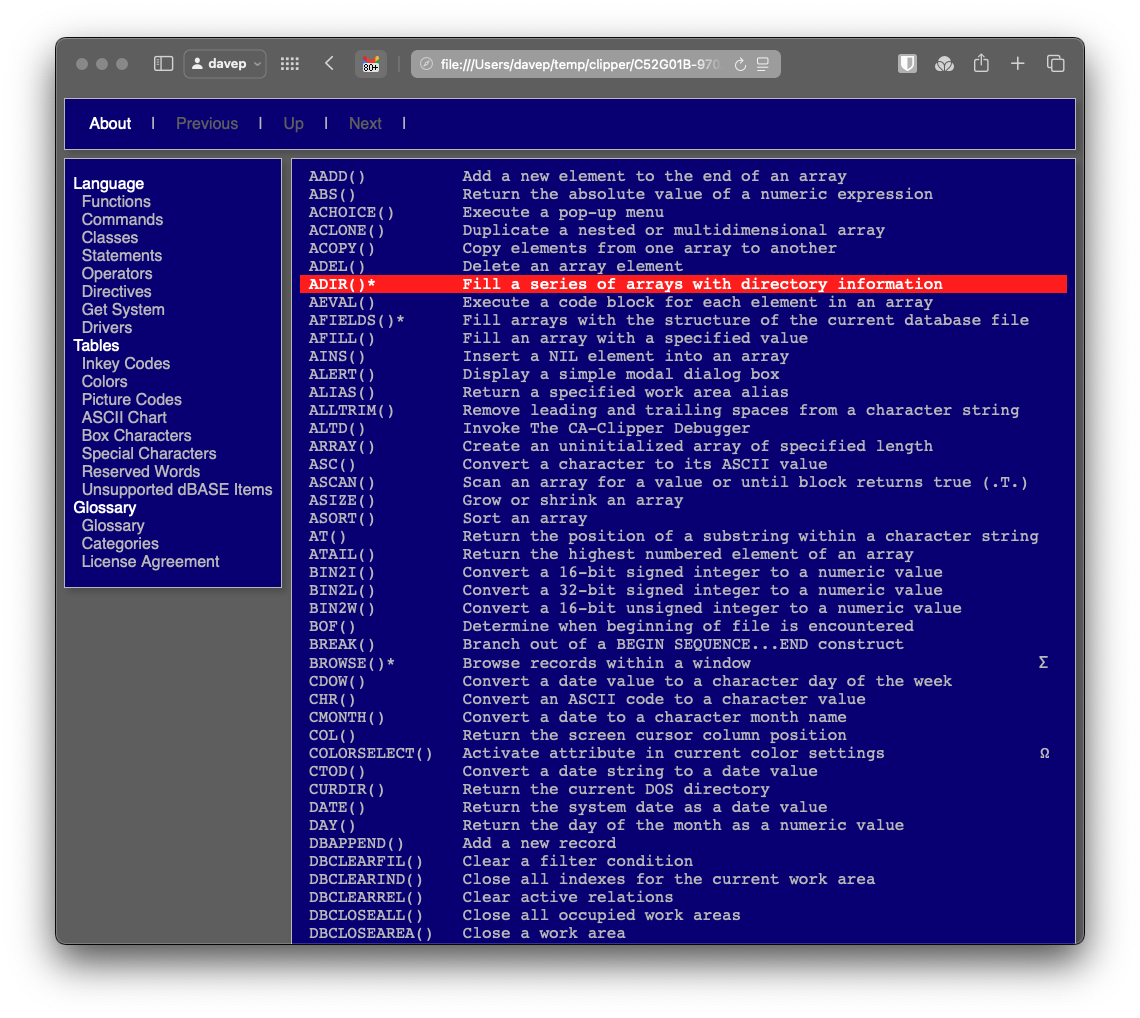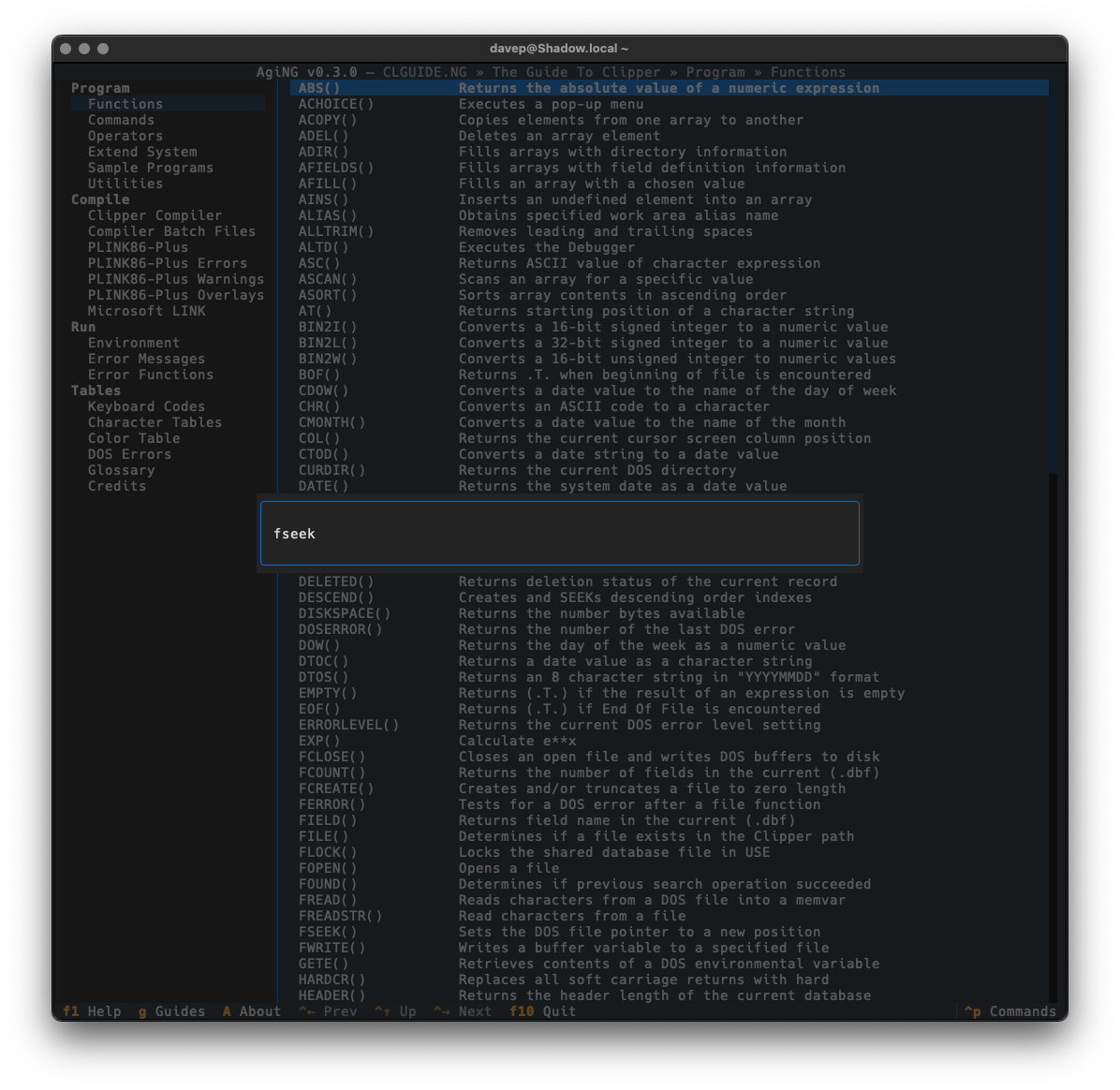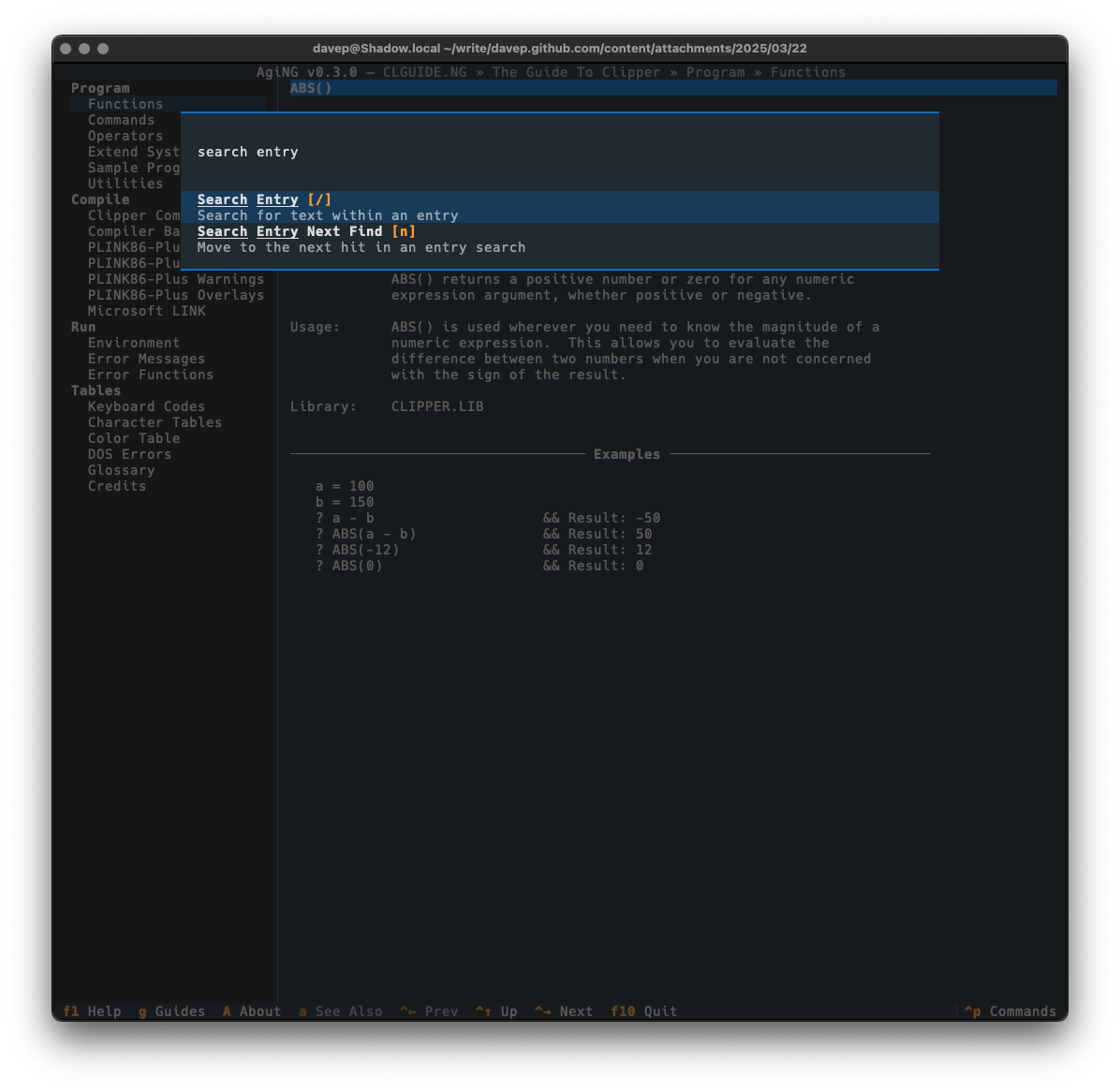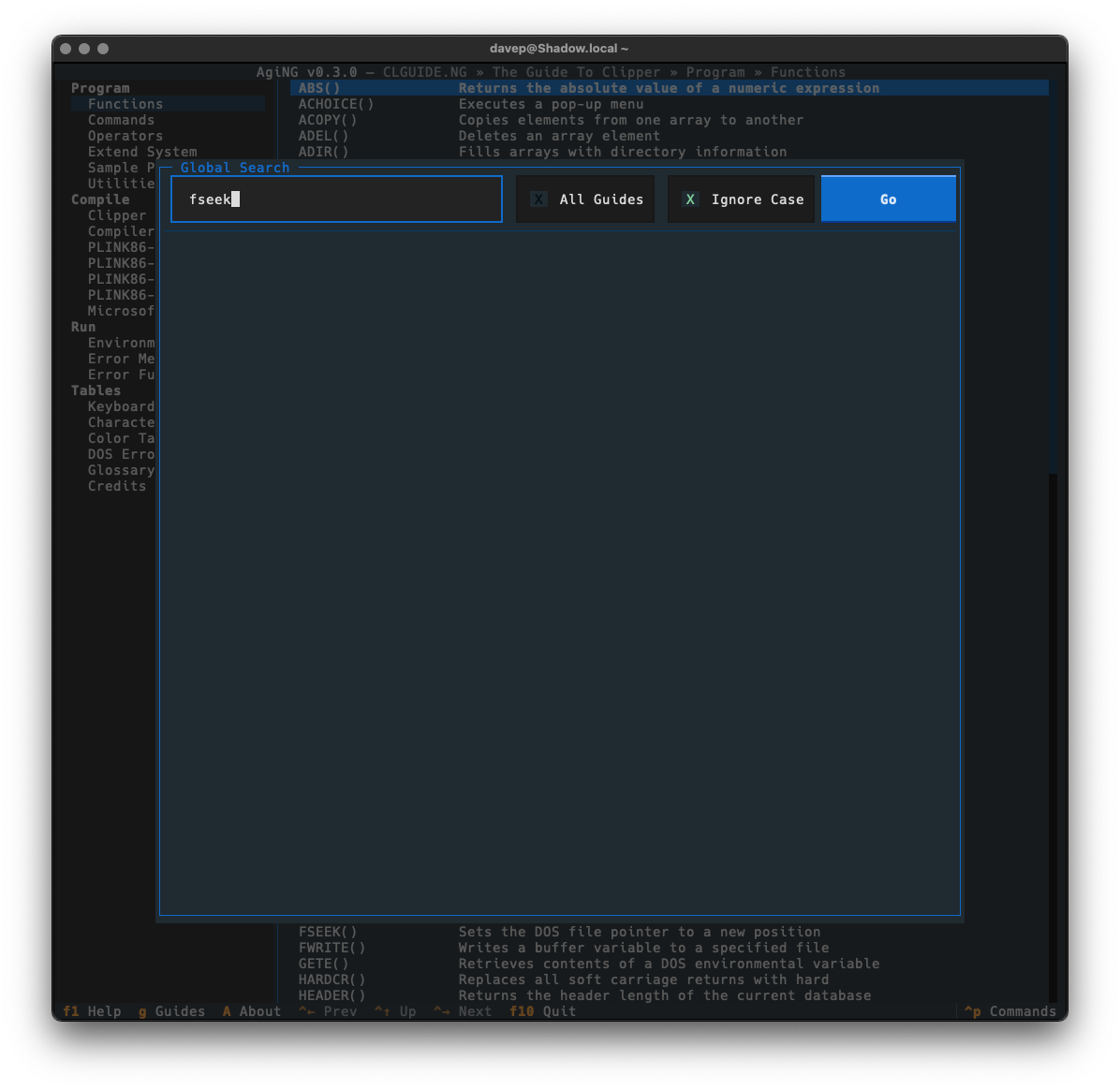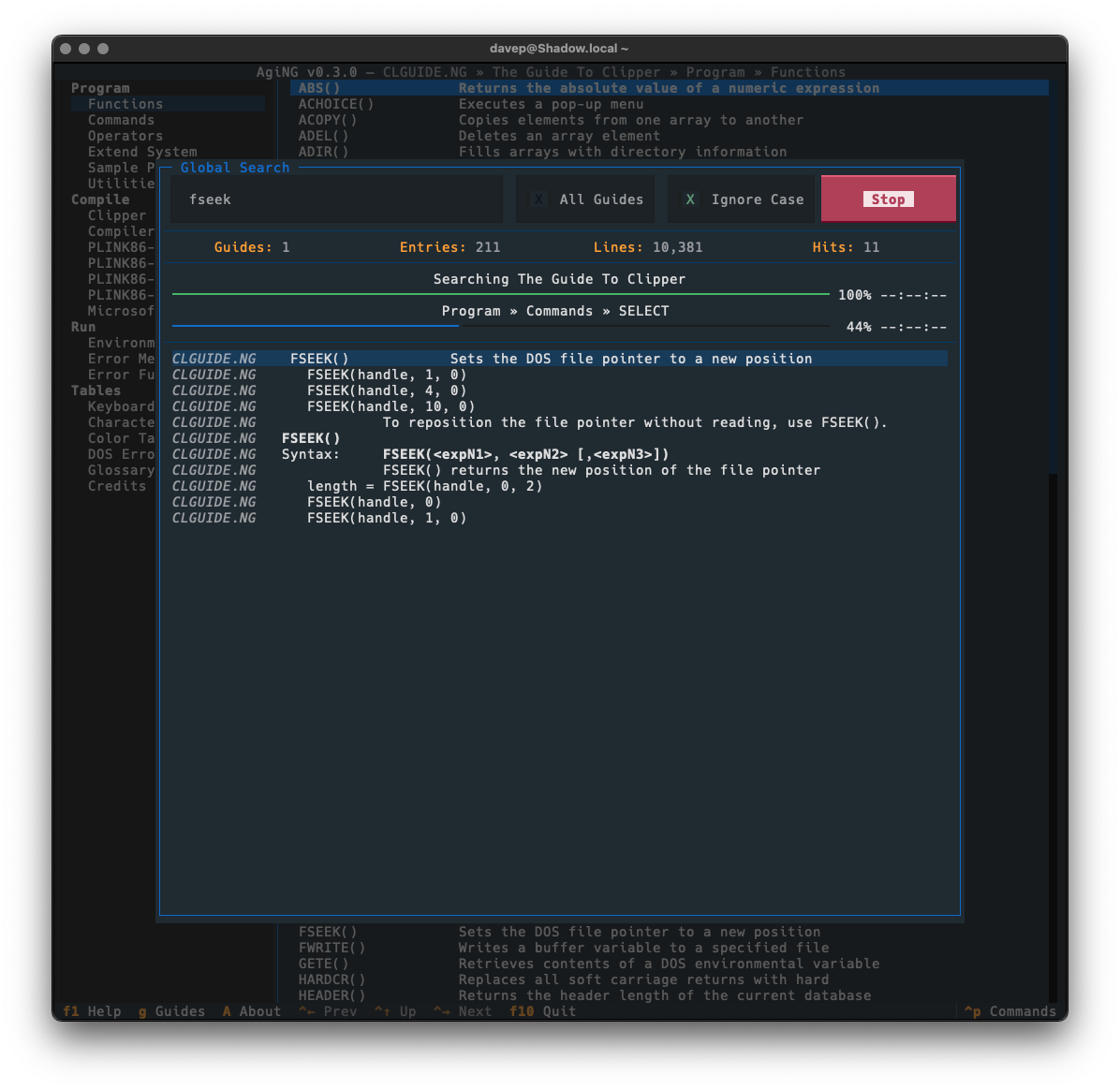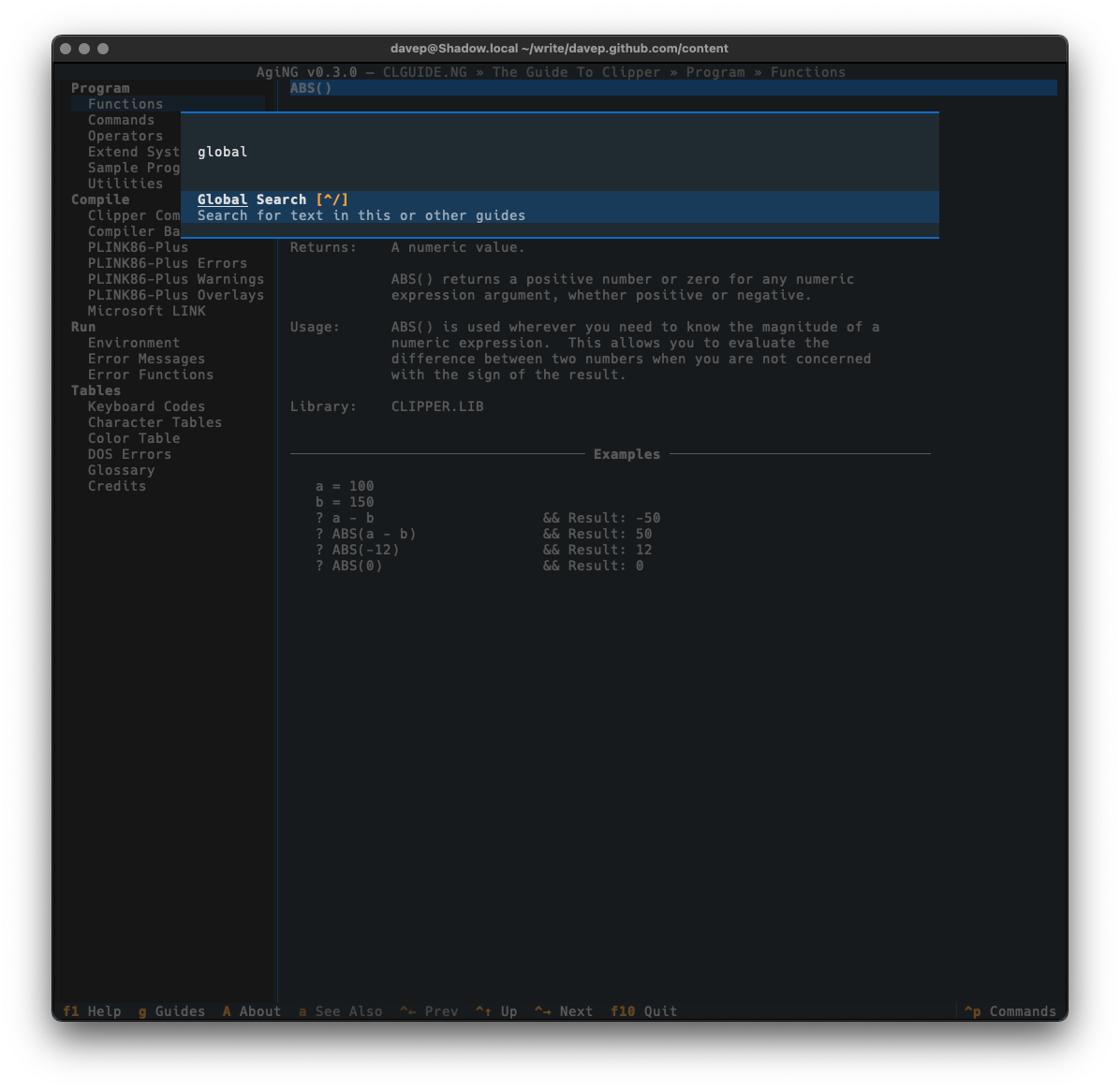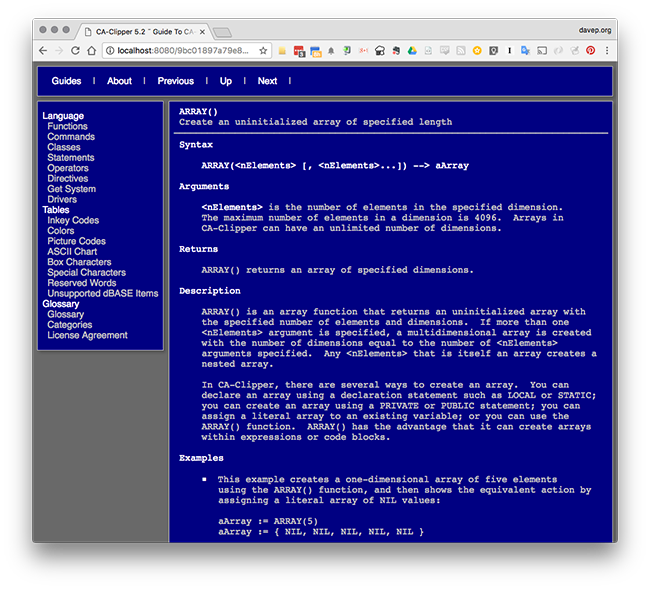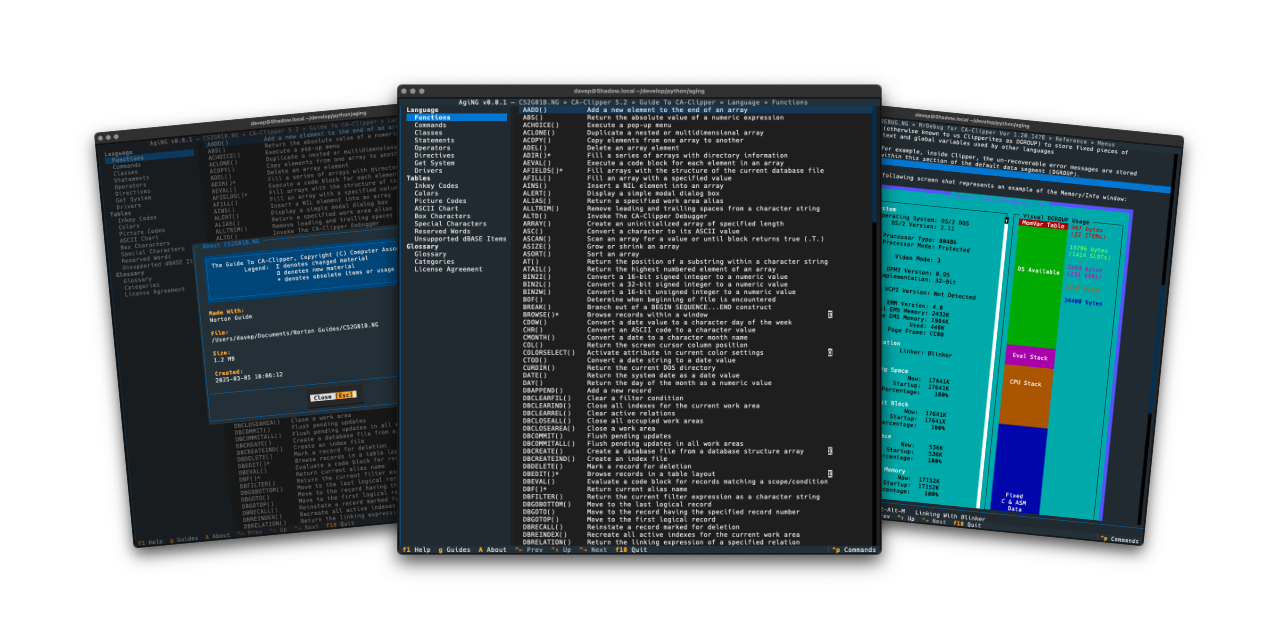
It seems I really do still have this need to create new terminal-based
projects at the moment. There's been
Braindrop, then
Peplum, then after that came
Hike. While I'm still tweaking and adding to them,
and also using them to refine a wee library I'm building up that forms the
core of my latest apps, I felt I
still had this one app that I needed to finally build.
Since the 1990s I've had this mild obsession with building tools for
maintaining access to Norton Guide
files. I've written readers for
GNU/Linux (which also works on macOS too),
OS/2,
Windows, GNU
Emacs, and also or the web (in multiple
incarnations). Those builds have covered a few languages, including C, C++,
Pascal, JavaScript and Emacs Lisp.
I'd never written a Python library or application for it though.
So when I first saw Textual mentioned in passing on Twitter a few years
back, way back in the 0.1 days, I thought that could be the thing that would
push me over the edge. In anticipation of that, back in 2021, I initially
developed ngdb.py. This is a library
that provides the core Norton Guide reading code for Python applications and
could form the basis for other tools.
As a test for this I then wrote ng2web
(which works, but I think still needs a bit of tidying up -- something I'm
aiming to do in the next few weeks).
Meanwhile, the journey with Textual itself kicked
off, happened, and came to an
end; and yet somehow I'd never got
round to building the thing I'd initially looked at Textual for: a
terminal-based Norton Guide reader that looked nice and modern (by terminal
standards). When I initially joined Textualize the owner had actually said
they wanted me to build this as test of the framework, to essentially start
out by employing me to create some Free Software that would help dogfood the
library, but that seemed to get forgotten.
Fast forward to the start of this month and I finally felt it was time to
tackle this. The result is AgiNG.
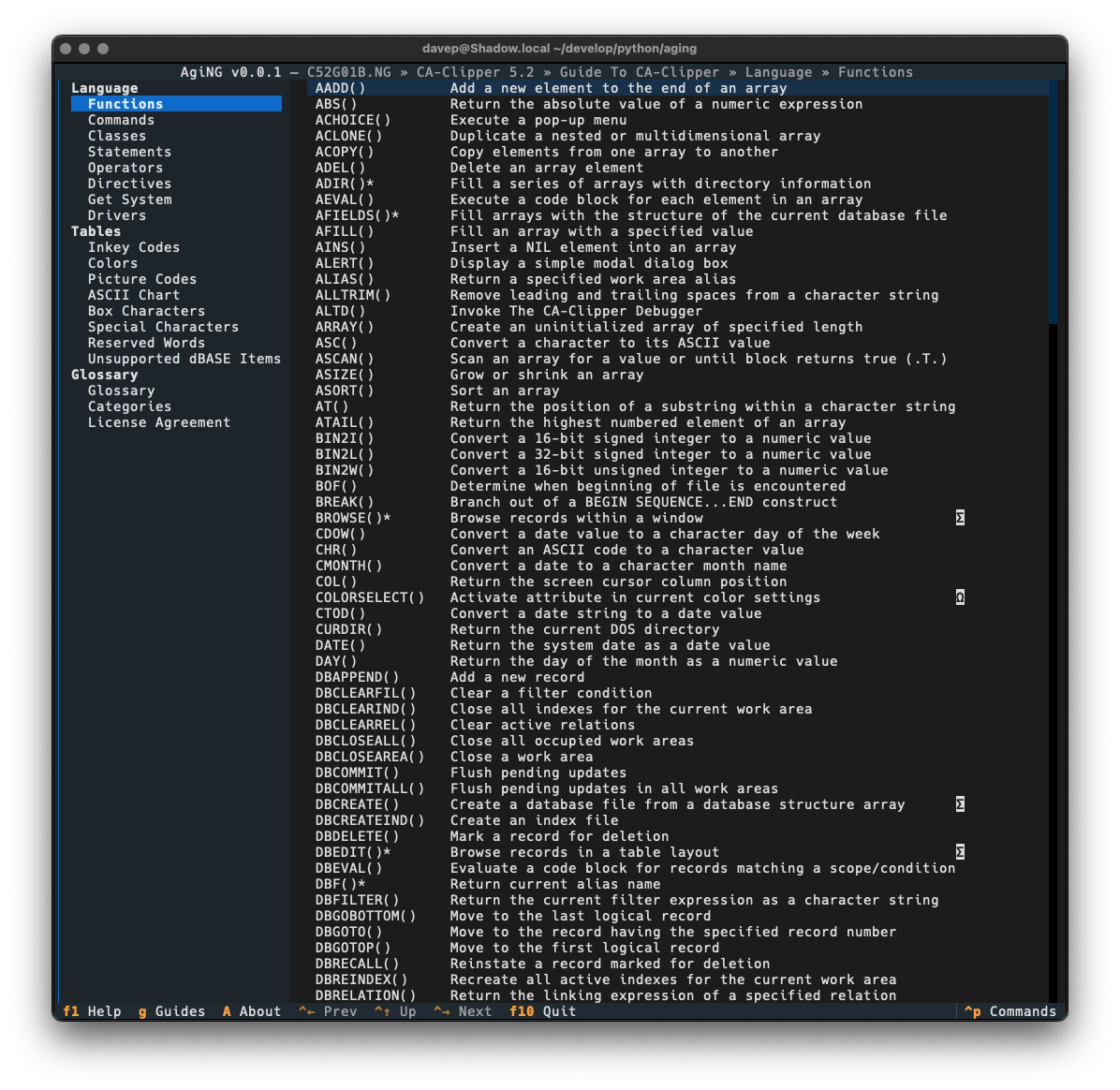
As of v0.1.0 it has most of the features you'd expect from a usable Norton
Guide reader, including:
- An ability to add guide files to an in-application directory.
- The ability open and navigate a guide.
- Full see-also support, etc.
- Full translation of characters as were under MS-DOS into the terminal.
- The ability to copy entry text or source to the clipboard.
- The ability to copy save entry text or source to a file.
- Access to a guide's credits.
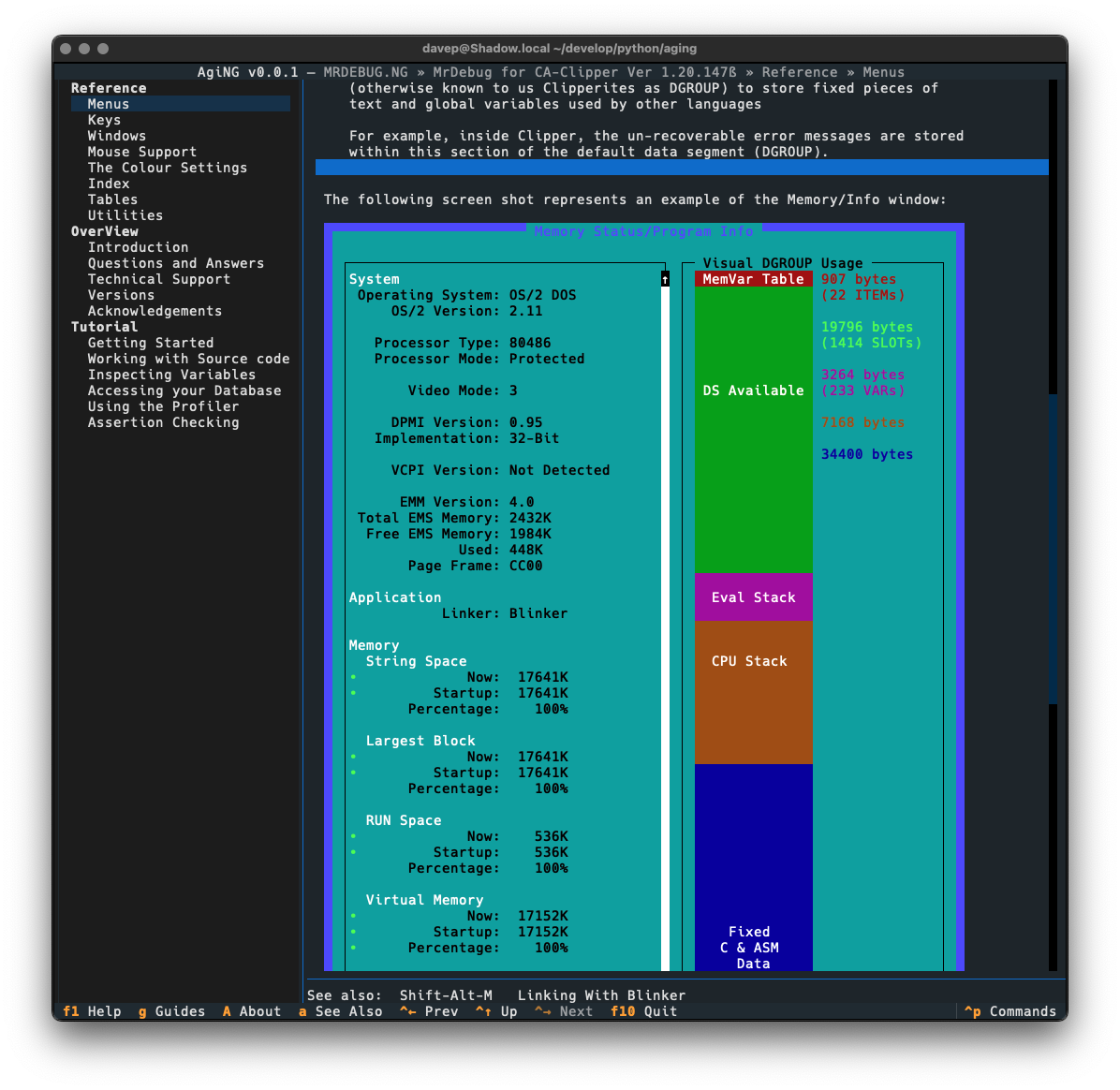
I still need to write some proper documentation for the application, but
meanwhile all commands and key shortcuts can be discovered either via the
help screen:
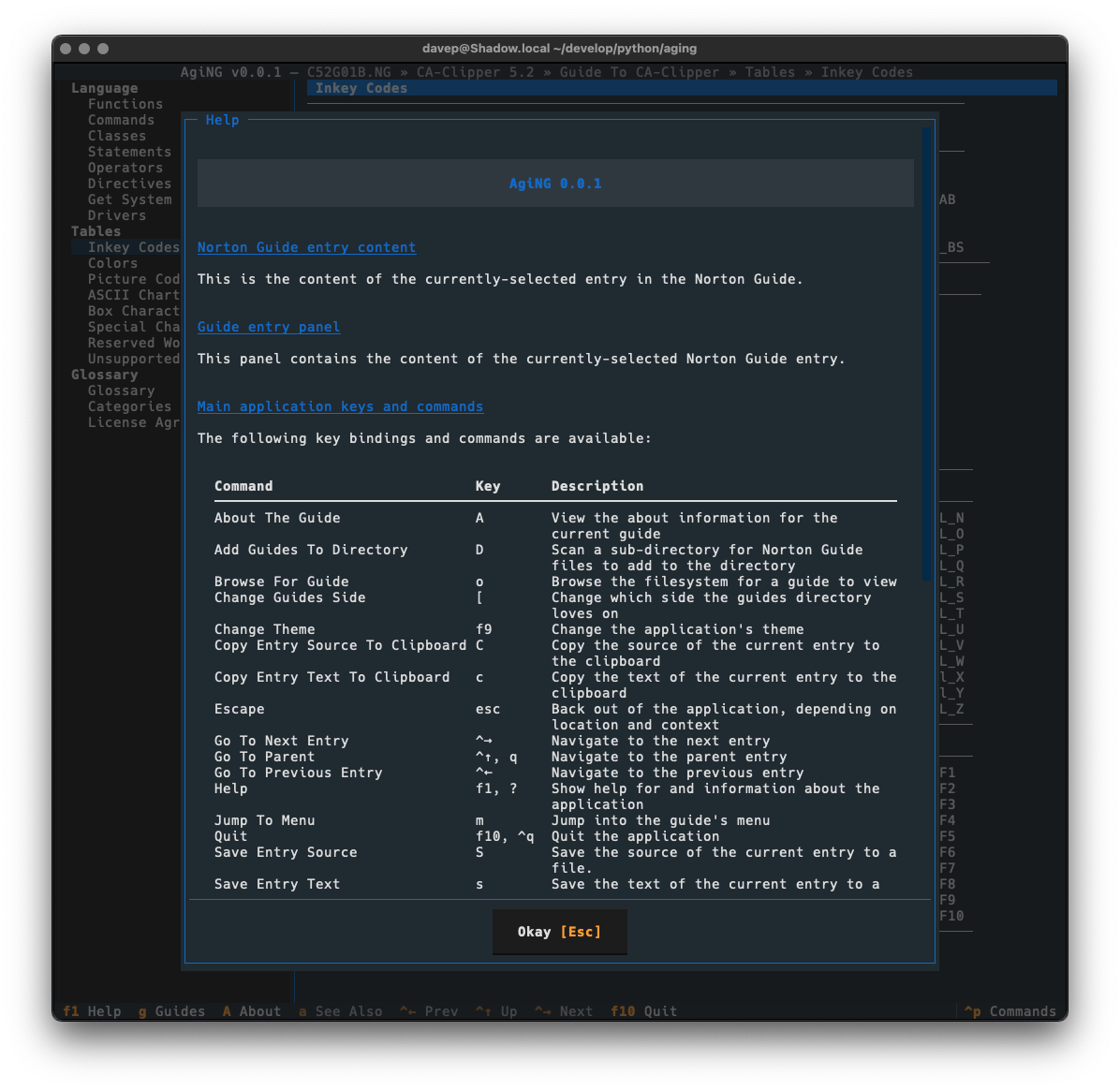
or by pulling up the command palette:
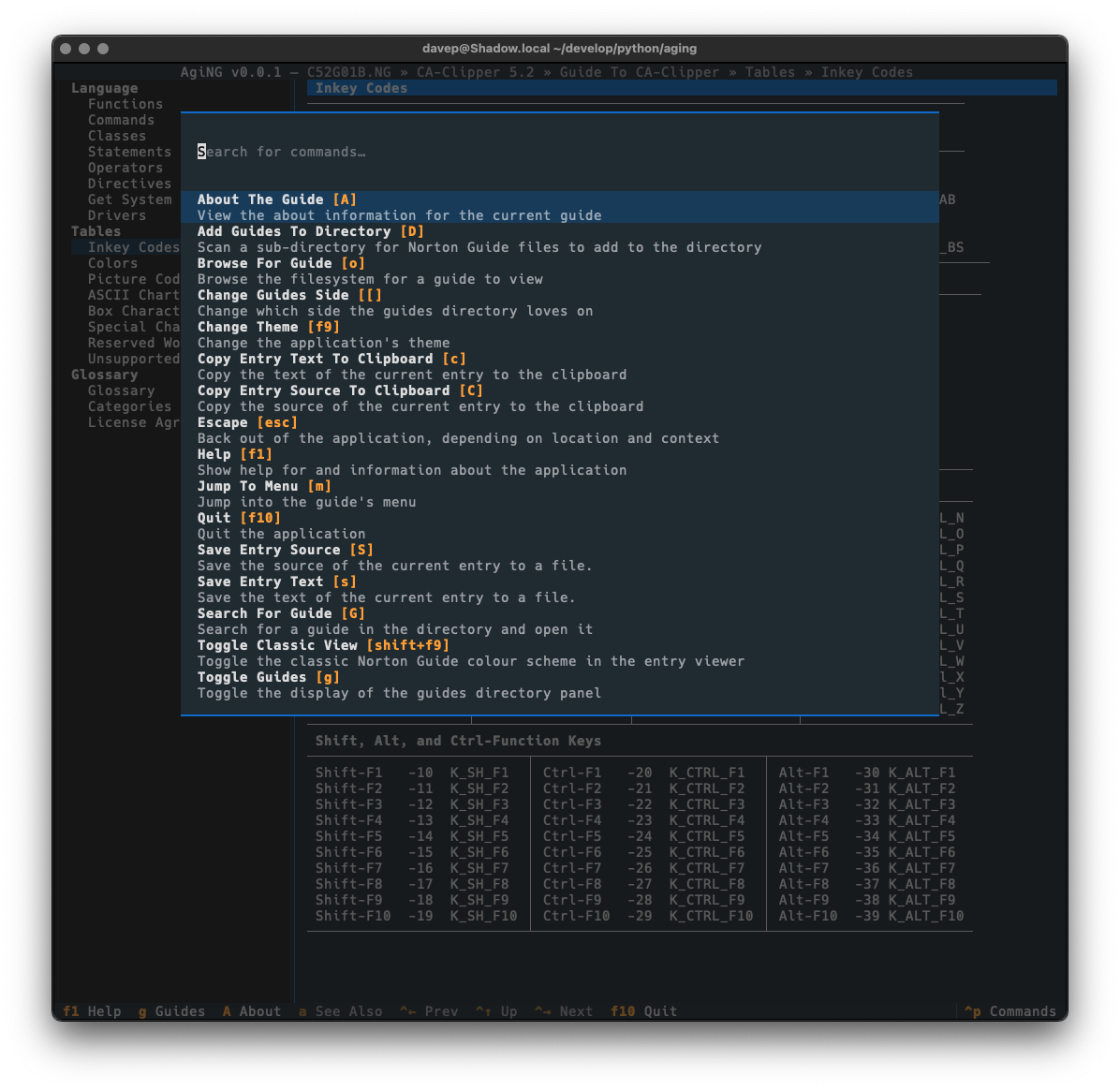
Hopefully the workings of the application will be fairly obvious to anyone
who is familiar with Norton Guide files; if anything isn't making sense I'm
more than happy to answer
questions or
take suggestions for
improvements.
One wee feature I want to call out, that I felt was important to add, was a
"classic view" facility. The thing with Norton Guide files is they were
mostly created in the very late 1980s and early-to-mid 1990s. People would
often get creative with the colouring within them, but in many cases the
colouring assumed the default Norton Guide application. Its colours were
white text on a blue background. So sometimes other colouring was done
assuming that background.
You can see an example of this here, with an entry in a guide being viewed
using the default textual-dark theme:
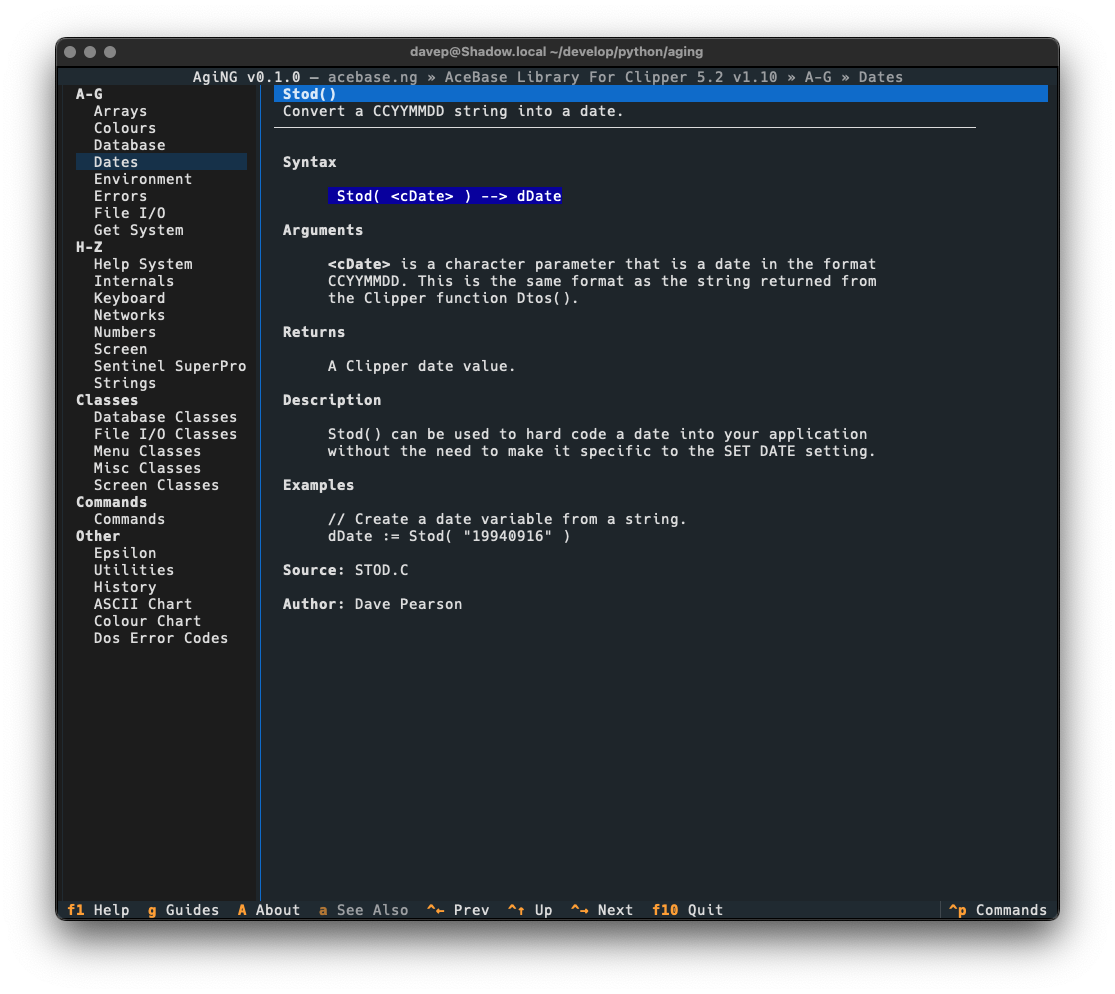
Notice the colouring in the syntax section. This is more obvious if the
application is switched to one of the light themes:
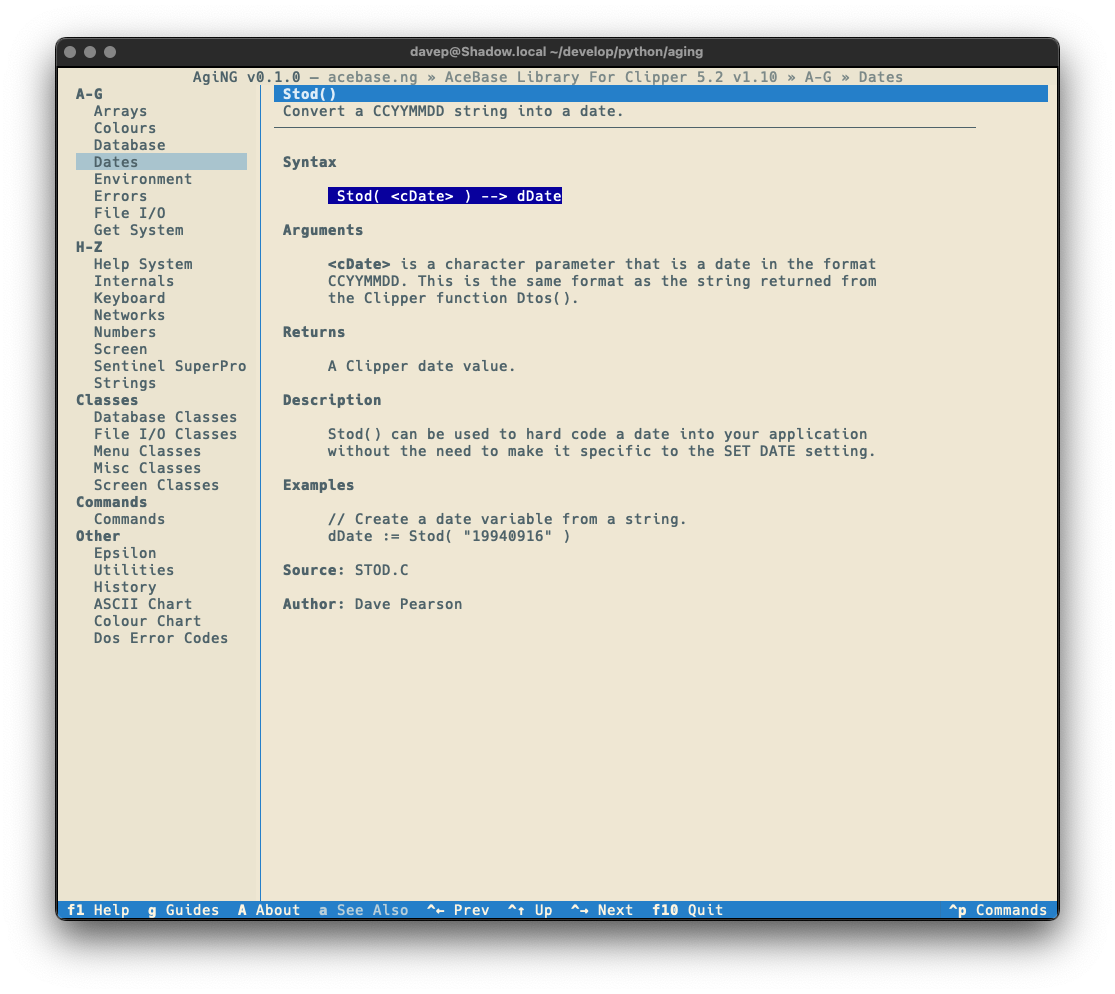
With a nod to this issue in mind, I added the "classic view" for entries
(which is a sticky setting -- turn it on and it stays on until you turn it
off):
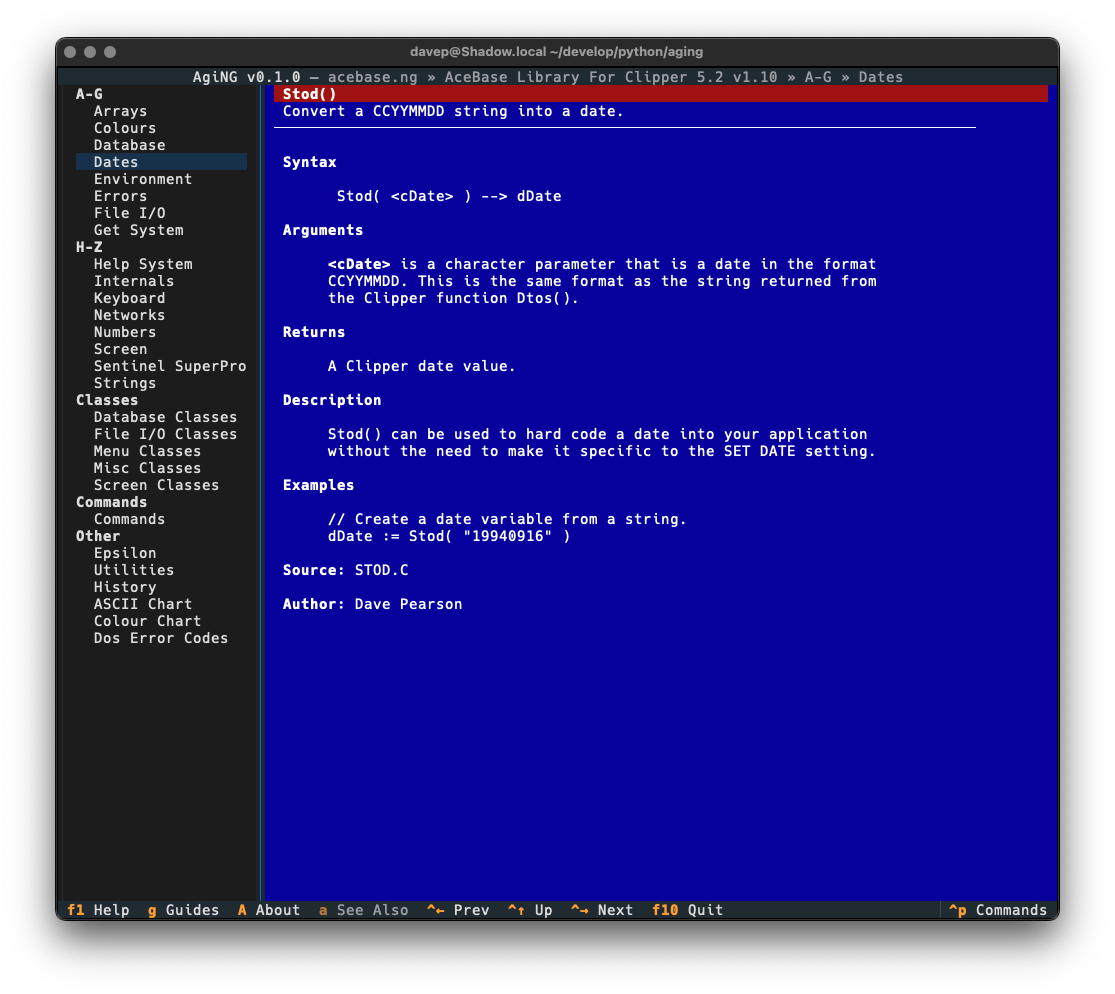
A little hard on the eyes, I think, but also filled with nostalgia!
Talking of themes, all the usual application themes are available, here's a
wee selection:
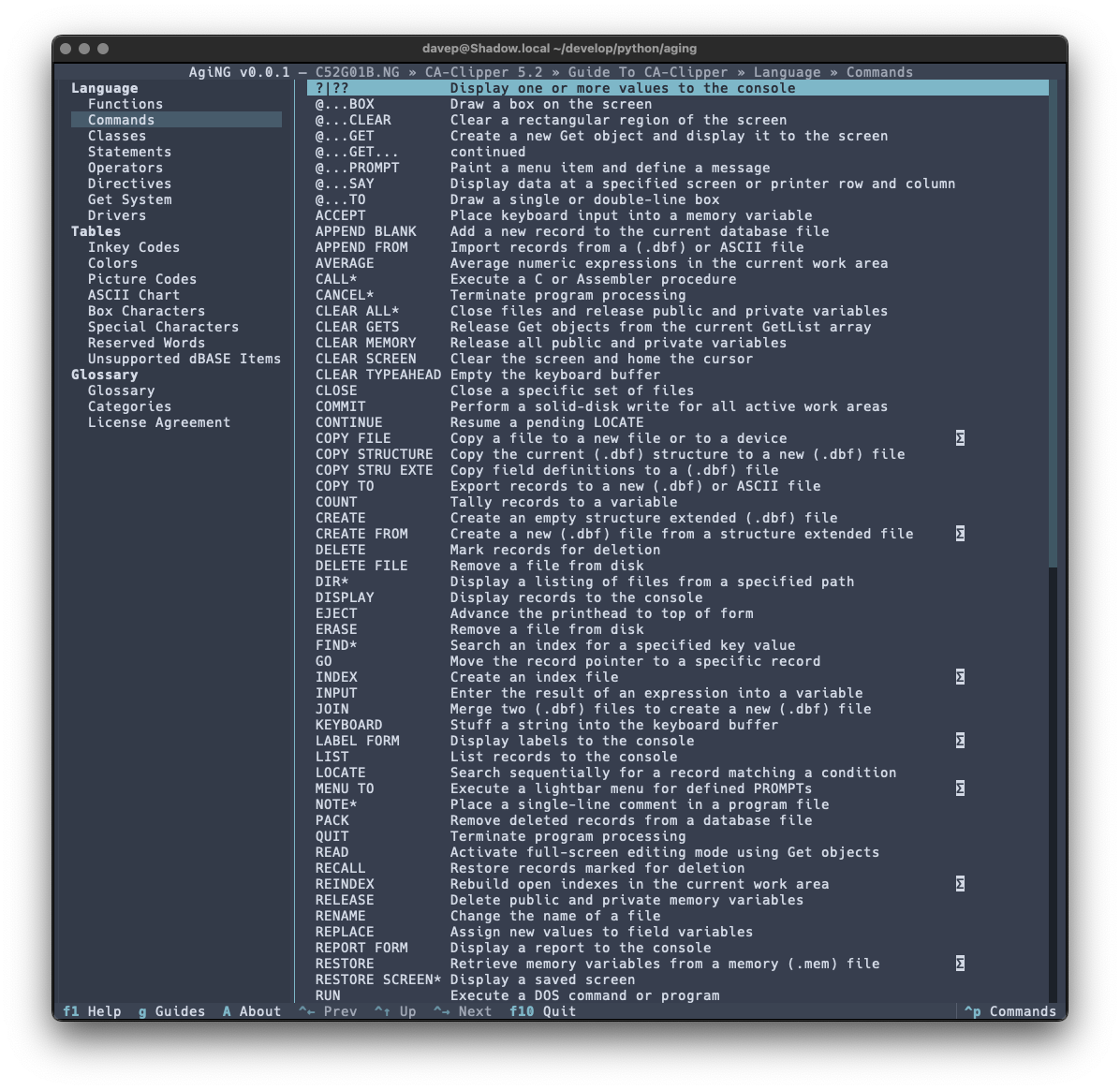
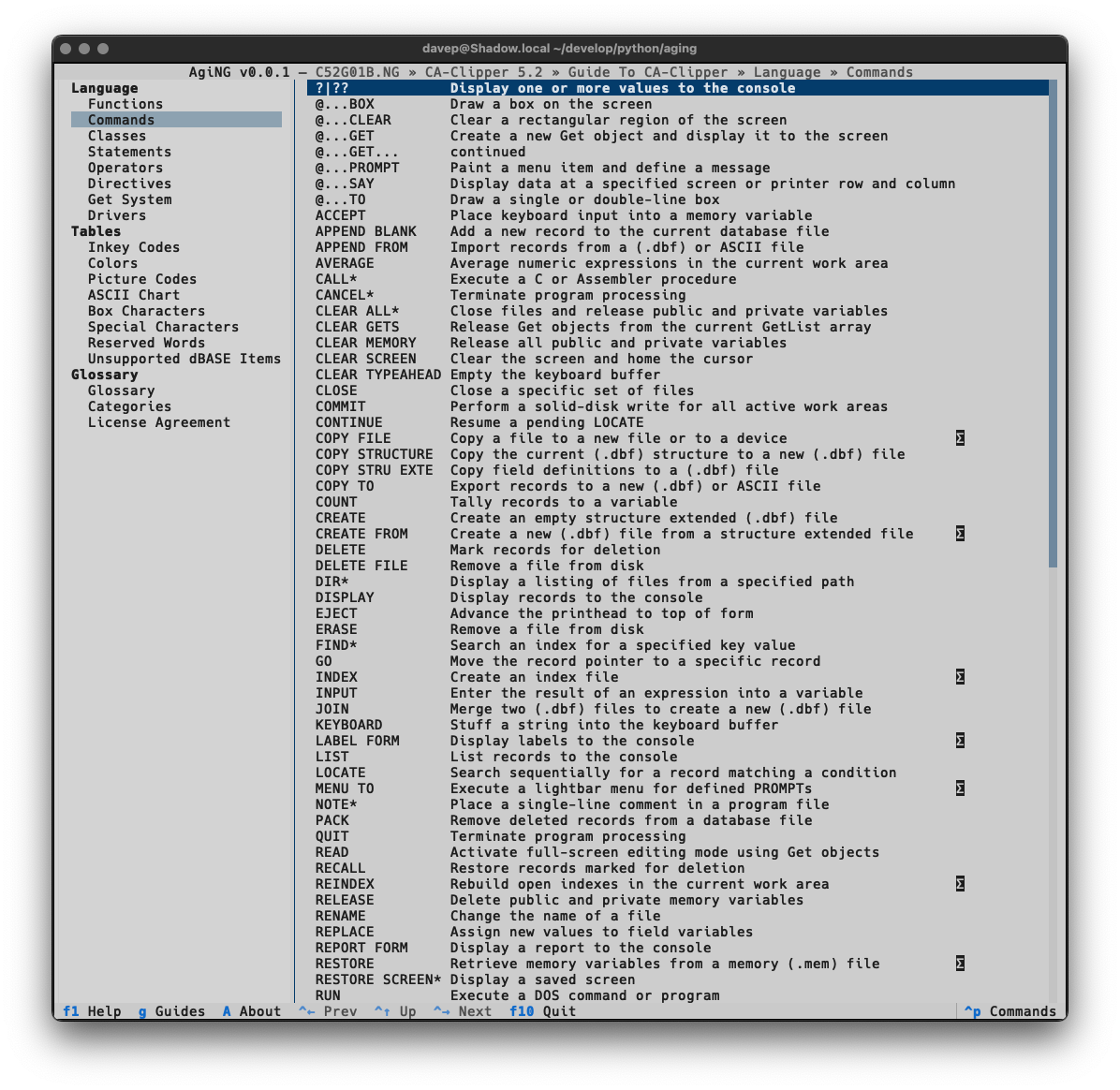
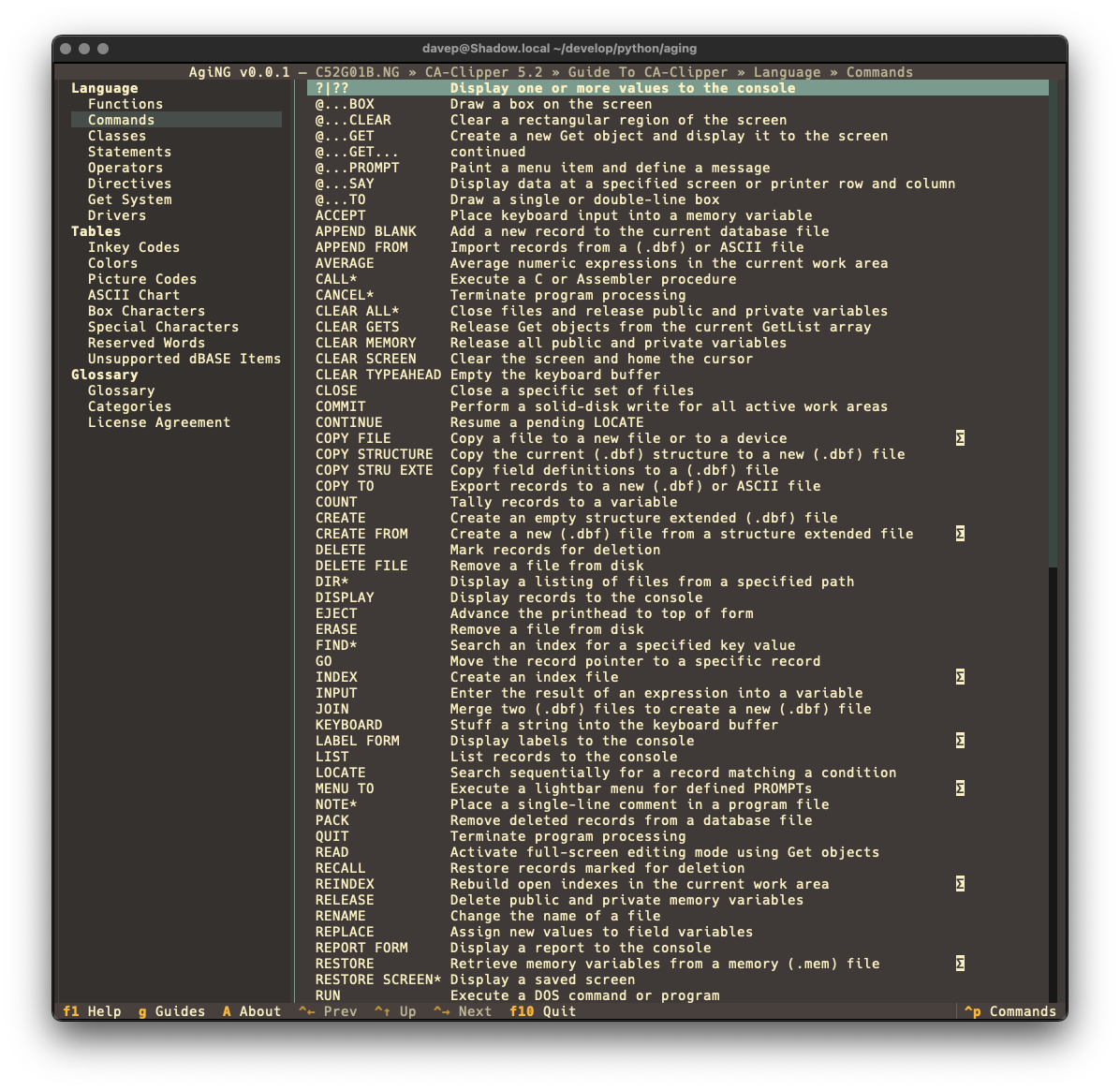
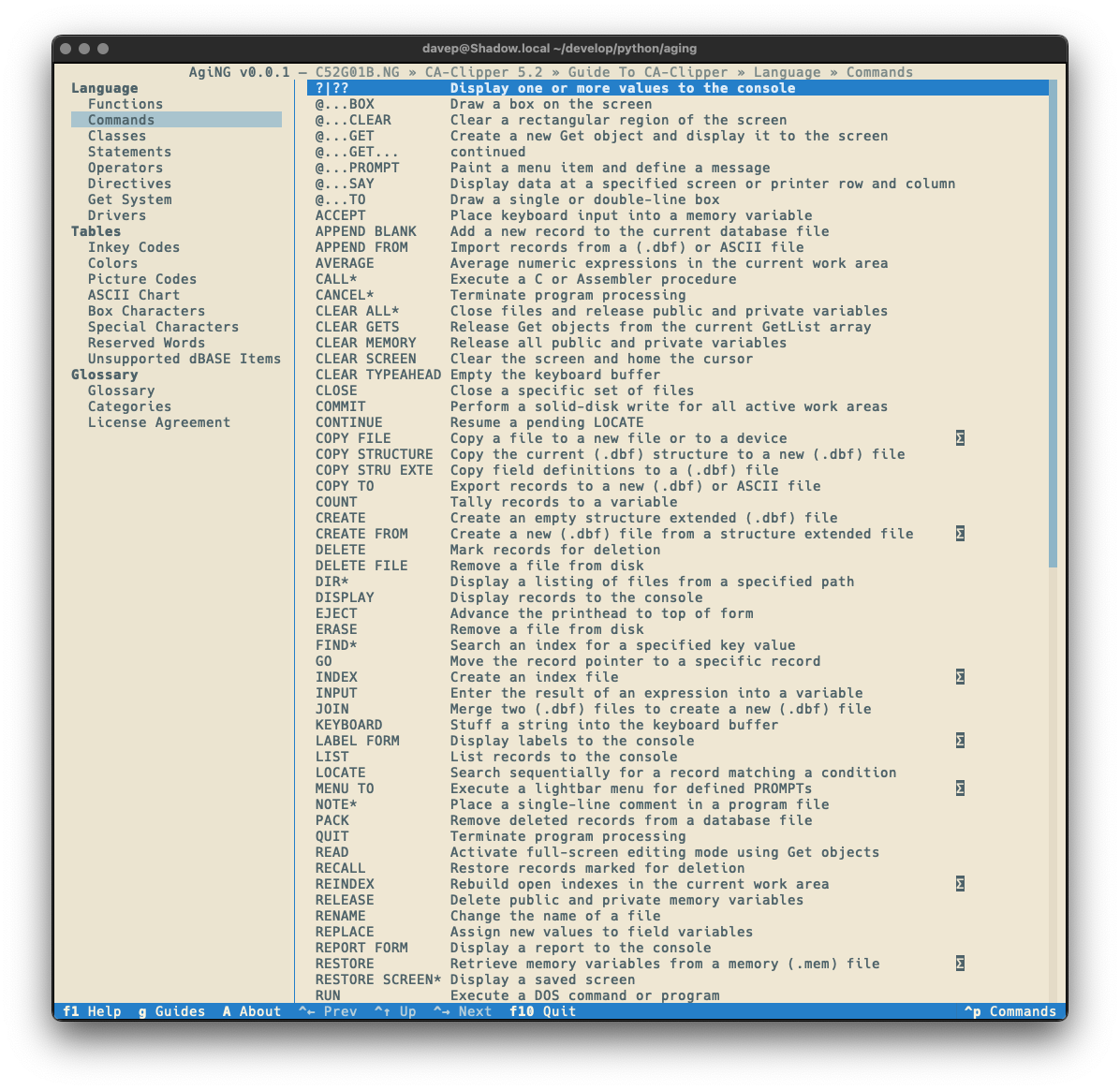
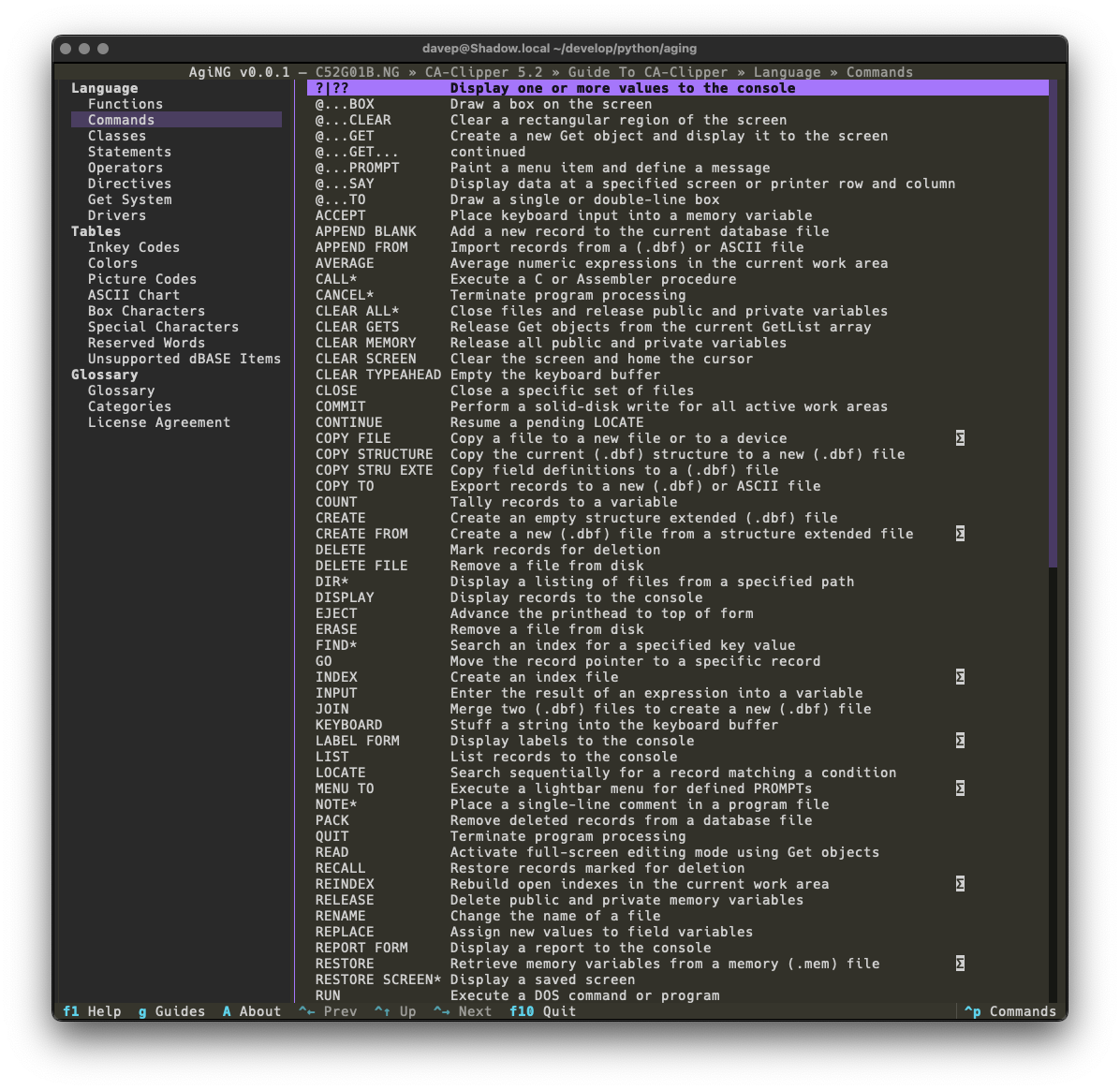
AgiNG is licensed GPL-3.0 and available via
GitHub and also via
PyPi. If you have an environment that has
pipx installed you should be able to get up and going with:
It can also be installed with
Homebrew by tapping davep/homebrew and then installing aging:
$ brew tap davep/homebrew
$ brew install aging
Expect to see more updates in the near future; as with other recent projects
this is very much something I'm going to be dabbling with and improving as
time goes on.
